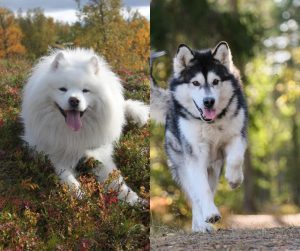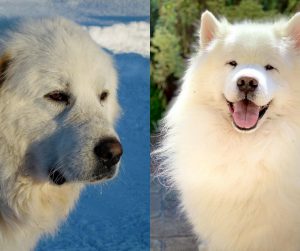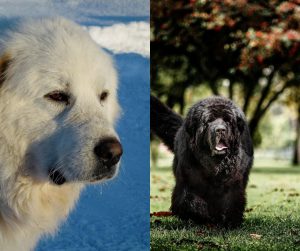A teacup Maltese is not a separate breed. It is the same Maltese breed. The difference is only in size. Teacup is a term that we use in the past few years to refer to miniature breeds. In the past few years, we’ve seen a rise in popularity in teacup or toy breeds. Why? Because some people want to carry their dog in a purse.
The AKC does not classify or register teacup dog breeds at all. Speaking of teacup or toy Maltese dogs, they are some of the most beautiful and lovely looking dog breeds.
The teacup Maltese is also known as Miniature Maltese, Mini Maltese, or Toy Maltese. How big are these dogs? And what is their history? Let’s look at all of that.
History of the breed
When it comes to the history of the breed, the Maltese is one of the hardest to pinpoint. According to some experts in the dog world, the breed originated somewhere between 6,000 BC or 8,000 BC. The exact origin of the small dog breed is uncertain.
There are various theories. One is that it was developed from the Spaniel-type or Spitz dogs in the Isle of Malta. Other theories claim the dog originated in Italy. And then there are always theories that the breed was developed in places like China, the Middle East, Tibet, and Japan. The last theory suggests that Maltese played a role in developing other small Asian dogs.
During the 1800s, the dog became more and more popular, and there were concerns regarding the classification of the Maltese.
Some experts believed he belongs in the Terrier family due to his temperament, while others believed he belongs in the Spaniel family due to the physical appearance. But by the early 1900s, the Maltese was its own family.
The dog breed was introduced in the United States in 1873. In the 1950s, the Maltese grew in popularity and became one of the more popular small dog breeds.
Temperament
When it comes to teacup Maltese temperament, you should know that you are getting an outgoing and confident dog. This breed is quite sociable.
The loving and friendly tiny dog wants to be around their humans. So, if you are a prospective dog owner, be ready for an affectionate companion dog.
This tiny pup was originally bred to be a lap dog. But at the same time, it is not a lazy dog. In fact, this small size dog is quite playful. You just have to be careful around bigger dogs. Your tiny Maltese might be a bit wary around other large dogs.
Food and diet
Do not expect your teacup Maltese puppy to eat a lot. Remember, this is a small dog, and you need little dog food. But at the same time, your Maltese dog is a picky eater.
Speaking of the amount, your dog will need just a single cup of dog food per day.
Trainability
Teacup Maltese puppies are not among the most intelligent dogs. But at the same time, they are not stupid. What is important is that your Maltese puppy is eager to please. This tiny dog wants to form a relationship and bond with their dog owner. They learn quickly and respond well.
But when you train them, make sure to use positive reinforcement. Remember, Maltese puppies are rather sensitive and they take punishment badly. You might even make matters worse, and your puppy might start hiding from you.
Lifespan
At its regular size, the Maltese is one of the longer-living dogs. They live between 13 and 16 years. However, teacup dogs have a shorter lifespan.
There are many factors that play a role, including the diet, exercise, health, activity levels, genetics, and more, but generally speaking, teacup breeds come with their own set of side effects.
With that in mind, a teacup Maltese is usually limited to just 5 years of age. Some changes that affect his lifespan are the following:
- Hearing, as the dog loses its ability to distinguish sounds
- Eyesight, gradual loss of peripheral vision
- Hardening of the arteries, and causing heart issues
- Reduced muscle and increased body fat, which results in obesity and fat surrounding the internal organs
- Diminished ability to detect scent
- Lungs start losing their elasticity, resulting in breathing problems, common in teacup and toy breeds
Health concerns of teacup Maltese
The compact size of the teacup dog comes at a price, or with its own set of consequences. Unlike regular Maltese dogs, the teacup variant is more susceptible to health issues. We already mentioned they live a shorter life.
Common health issues include heart problems, fragile bones, dental problems, low blood sugar, breathing problems, seizures, and many more.
You might be able to avoid some of the problems by getting a puppy from a reputable breeder, but the side effects of owning a toy or teacup dog are there.
How to improve life expectancy?
The good news is that you can do a few things to extend the lifespan of your teacup pet.
For starters, you can incorporate daily exercise and feed your dog healthy meals. These two go a long way. Exercise is the most important thing, as it is useful for the entire body, including the muscles, heart, and lungs. And a healthy diet means your dog avoids heart issues.
Because a teacup breed is small, they usually have breathing issues. You can reduce the risk of breathing problems by minimizing or completely avoiding second-hand smoke. Inhaling second-hand smoke will increase the risk of your dog of lung cancer and heart issues.
Make sure to take your pet to the vet on a regular basis. Routine checkups can detect a problem and treat it before it escalates.
Size
Regular Maltese dogs are normally between 8 and 10 inches tall at the shoulders. Female dogs are between 8 and 9 inches tall. According to breed standard, the weight of Maltese is under 7lbs, with their preferred weight between 4 and 6 lbs.
A teacup Maltese is on the low end of the preferred weight of 4 lbs. Anything smaller than this is highly improbable for an adult dog.
Exercise needs
Whenever you talk about exercise needs, you have to talk about Teacup Maltese health. This puppy doesn’t need a lot of exercise. Some 30 minutes per day, divided into two 15-minute walks is more than enough.
Just do not make the mistake of carrying your teacup puppy. Despite their small size, you need to exercise them.
Concerns with Maltese dogs
No matter if you have a teacup or regular size Maltese, there are some things you have to consider.
Here are some of the common concerns:
- Grooming, you have to consider frequent combing and brushing. Your dog will become a matted mess quickly if you do not take care of their coat. You also have to take your dog to grooming professionals, so they keep their coat sheared short
- Maltese are some of the most difficult dog breeds to housebreak. They hate cold and wet areas, and if you live in such an area, you should consider a covered potty area
- Maltese are not suited to young children. Despite their friendly nature, problems might occur when small children are clumsy and can step on the dog
- One of the biggest concerns with Maltese dogs is the risk of separation anxiety and barking. Being a family dog, they love spending time with their loved ones. They need a great deal of companionship and do not like when they are left alone for long periods of time. Maltese will express his unhappiness through barking and destructive chewing
The controversy with teacup breeds
The problem with term teacup is that some breeders use it unscrupulously to mislead prospective buyers. It is one of the more common reasons to use the term teacup Maltese dog.
They advertise their puppies as teacup or miniature, in an attempt to sell more puppies at a higher price. The smaller the dog is, the price goes higher, and that is the irony.
But we have nobody else to blame than ourselves, as we are trying to get a smaller and smaller dogs.
Conclusion
With all that is said, here is a quick summary of the pros and cons of the teacup Maltese dog. You should get this dog if you want a small breed, one that is polite with people and friendly with other animals, and sheds very lightly, often doesn’t shed at all. The last one is quite important for allergy sufferers.
In the same time, you should avoid a teacup Maltese if you do not want to deal with the fragility of toy breeds, notorious housebreaking difficulties, frequent brushing, frequent combing, separation anxiety, and owning a toy breed in general.







